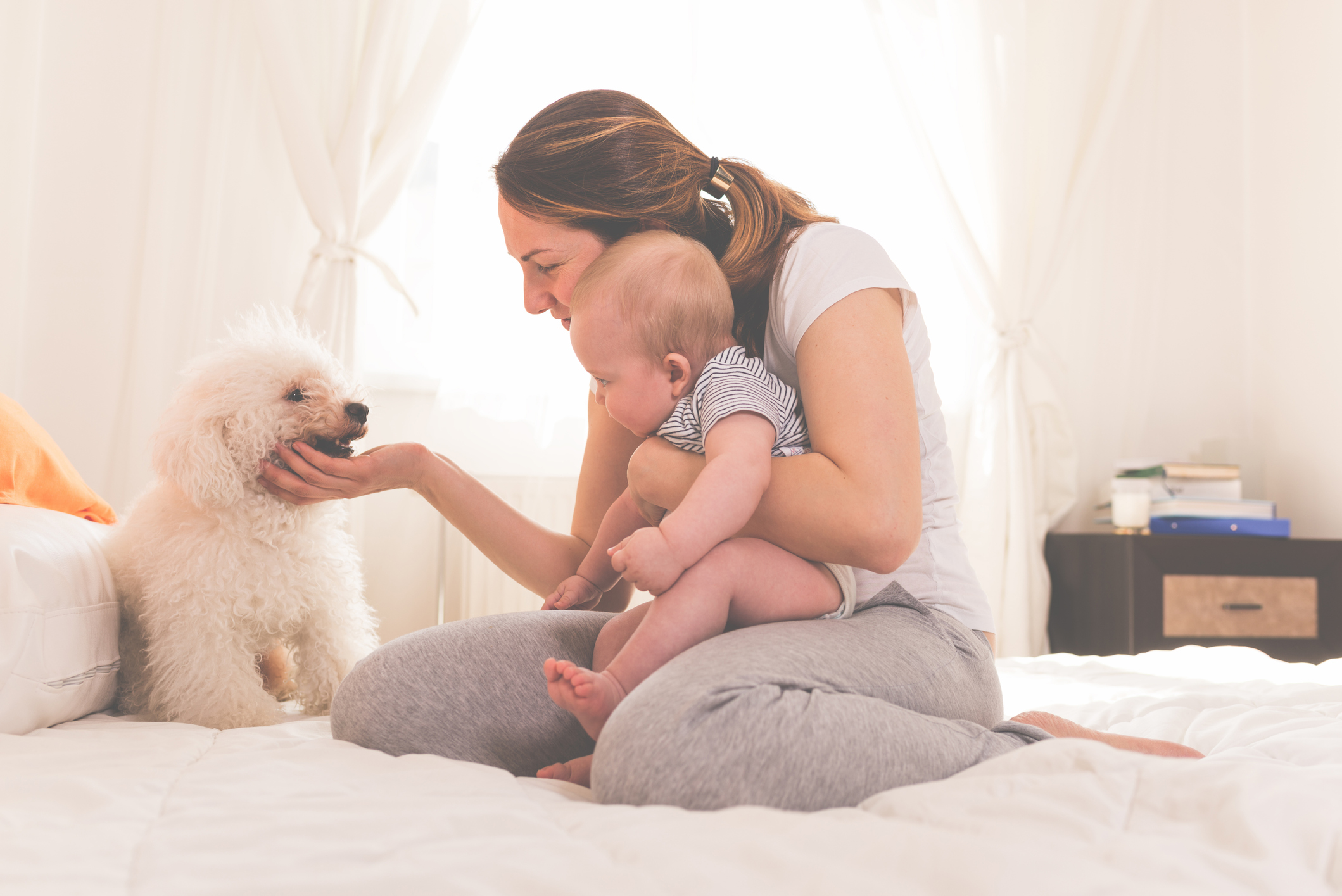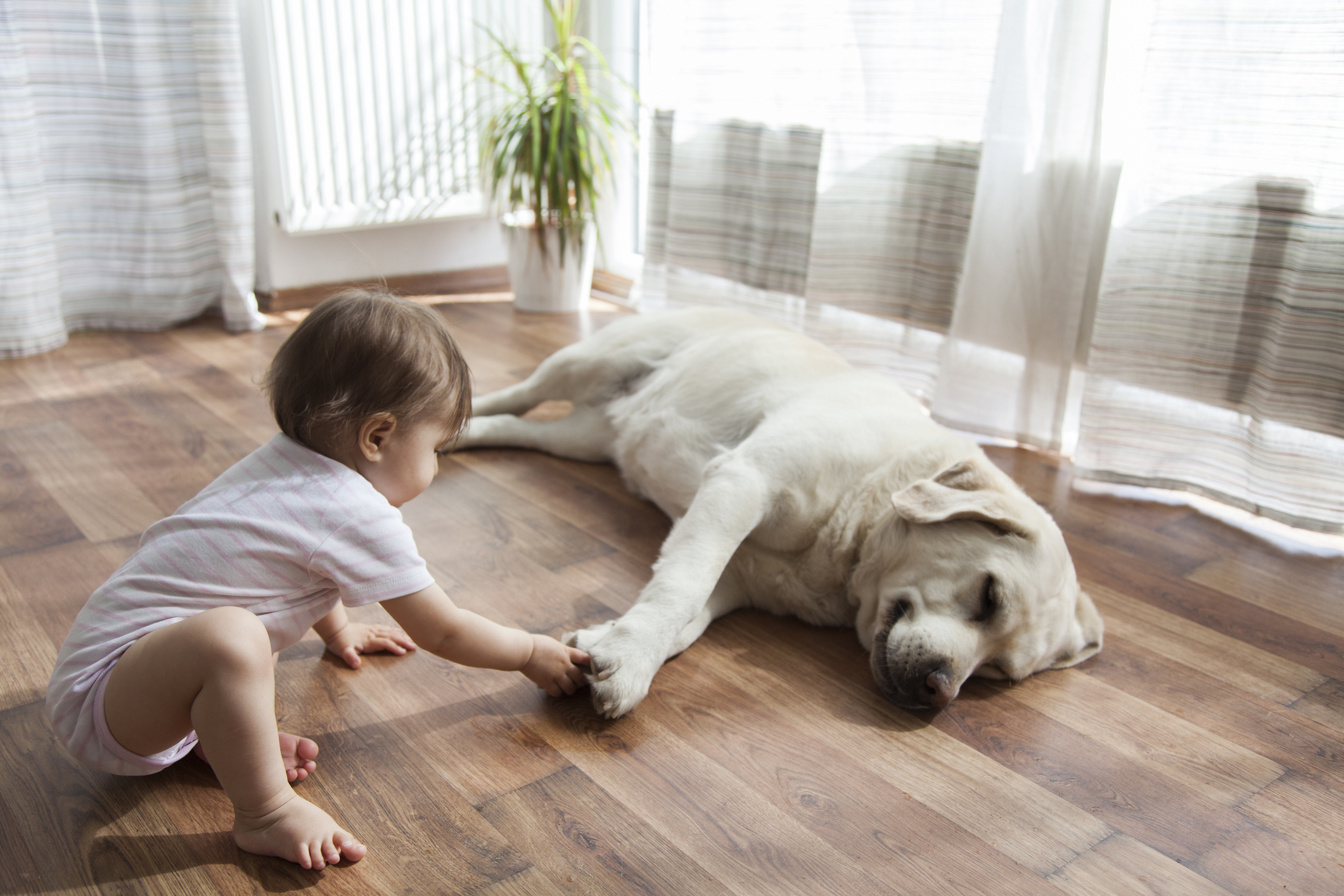
Dog Meet Baby! Successfully Introduce Your Pets and New Family Members
For many families, their dog is their first “baby.” If you’ve raised them since they were a puppy, your family is all they’ve known, and you’ve gotten the joy of watching them grow and learn over the years. Unfortunately, this dynamic can get more complicated when a new baby is on the way.
Many expecting parents develop anxiety over introducing their pets to a new baby, and with good reason. Changes to the household, including an entirely new person and major disruptions to your normal routine, can cause dogs significant distress. Additionally, you want to ensure that both your pup and your new baby stay safe during any interactions they may have.
If you’re currently a pet parent and are about to become a parent to a new baby, take time to prepare so the introduction and first few weeks after you give birth are safe and stress-free for your entire family.
The process starts before the baby
To successfully manage a transition with your dog and a new baby, you’ll want to start to prepare ahead of time. The following tips can help your dog adjust to the new senses they’ll experience once the baby arrives:
- Get your pup used to the baby furniture and toys. Let them sniff everything but train them not to make the bassinet a bed, chew on their toys or make the nursery a home if they are not welcome in the baby’s room.
- Introduce your dog to baby-related smells like diapers, clothes and baby powder. Acclimate them to new sounds, too, like cooing and crying, using recordings.
- Slowly adjust your pup’s schedule if you estimate there will be changes in the time you normally walk, feed or play with them.
- Train them to respond to commands, particularly to go to their “place” or bed, regardless of what may be going on around them.
Making introductions when the baby arrives

Once your baby arrives, you’ll need to take steps to ensure both are safe and happy while they meet each other.
- Establish the baby's presence before the introduction. Greet your pup alone when you first come home and give them some affection to establish normalcy. Don’t let the pup interact with the baby in close proximity right away. Carry on with your normal parenting duties and let the dog get used to the baby being in the home, in their room and interacting with you. Over the course of a few days, the dog should be used to the baby’s scent and sounds.
- Make a monitored limited introduction. After a few days, let the dog get close to the baby while on a leash. Have one person hold the baby and allow the dog to approach you while on the leash. Give them time to sniff and investigate, but stop the interaction if the dog performs inappropriate behavior like snapping, biting or barking. If your dog behaves well, give them lots of praise and remain calm.
- Let the interaction grow organically. Never force an interaction between your dog and your baby. Doing so could lead to fear or aggression. Always allow your pet to approach your child when they feel comfortable. Additionally, avoid scolding your dog for expressing curiosity. Sniffing does not warrant a stern voice or shout—this might only cause more fear of the baby.
- Keep firm boundaries. Always monitor the dog and baby’s proximity and interactions and keep the baby elevated so your dog can’t jump onto them. Ensure your dog continues to listen to your commands of “go to your place” if they get rowdy around the baby so they learn proper behavior and you can keep everyone safe.
- Never leave your dog alone with your baby. Even if you trust your dog after weeks of safe interaction, a sudden cry or movement could spook your dog and cause an unsafe situation.
Maintain normalcy
Before and after your dog has met your new baby, try as hard as possible to maintain a semblance of normalcy for your pup day to day. Dedicate time to play with your dog alone, without the baby around, so they know they are still loved and cared for. However, you should also play with and give attention to your dog when the baby is around, so they realize that the addition of the baby does not mean they are being replaced or that the baby is a threat to your attention.
Also try to maintain a consistent schedule. Ideally, you will have made any necessary routine shifts before the baby arrived. Maintain this new routine to avoid causing your pup additional stress.
Ultimately, you want your dog’s life to change in as few ways as possible so they can more easily manage the big change that is your new family member. Too many changes all at once could lead to your dog developing stress or separation anxiety.
Continue setting boundaries as they age

Although the initial introductions between your pup and your new baby are some of the most important, it’s also important to continue setting and maintaining healthy boundaries between your family members as your child ages. Mobile toddlers could be a newfound source of stress for your pet, as can improper pets or touches from an accidentally aggressive child.
As your child gets older and more mobile, give your dog a “safe space” of their own in the home where they can retreat if they are stressed or overwhelmed. Continue to offer lots of love and attention so your dog knows they are still cared for over the years, and encourage positive interactions between your pet and child so the two can grow up great friends.


